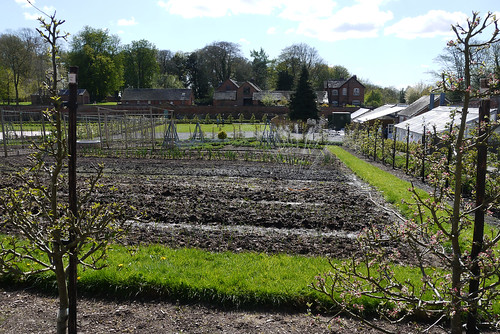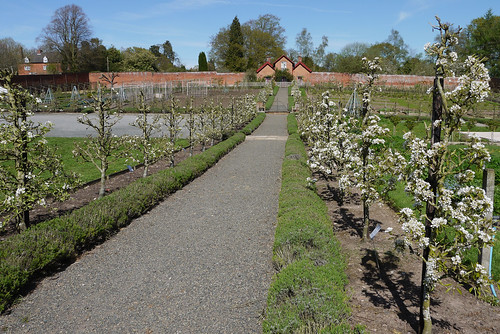Sugnall Walled Garden has been painstakingly restored by the owners of Sugnall Hall, the Jacques family.
It is now back to its former splendour as a four quadrant, two acre walled garden.
Walled gardens are a uniquely English concept and were built to grow fruit and vegetables; the high walls created a warmer micro-climate, which extended the growing season.
Today, although only two quadrants (and the perimeter of the walled garden) are productive, in which a variety of crops are planted all year round, including 50 varieties of pear and 100 varieties of apples.
The other two quadrants consist of one that is laid to lawn and hard standing, just outside the beautiful tearoom, and the other than since 2012 houses the Summer Marquee from April to October.
The high garden wall that completely surrounds the garden dates back to 1738 and consists of around a quarter of a million red Staffordshire bricks.
12 Comments CherryPie on May 18th 2015












You take us to such unique places in your blog…!
Thanks Lily, I am glad you enjoy the virtual visits
what a brilliant idea to extend the season. When I was in England a few years ago with my mum we went to visit Sissinghurst Gardens and Scotney castle. I just loved those gardens.
I am rather fond of walled gardens Sissinghurst is a nice garden to visit although it is a while since I have been.
Sissinghurst is a nice garden to visit although it is a while since I have been.
Ah, to have the benefits of a walled garden – but I would need one a bit smaller!
This one is rather large. I hope to go back in the summer some time
Oh, how interesting. I’ve been to several walled gardens, most notably at Hall Place in Kent and Carisbrooke Castle in the Isle of Wight but I did not know about the micro-climate effect. This one looks lovely.
This was a lucky unexpected find after we had been to Dorothy Clive garden. We weren’t quite ready to go home to we took the scenic route
Do they use a fallow method?
You know as much as I do about the garden
Now this is a garden I would visit frequently…I love the idea of a walled garden!
I have a bit of thing about walled gardens